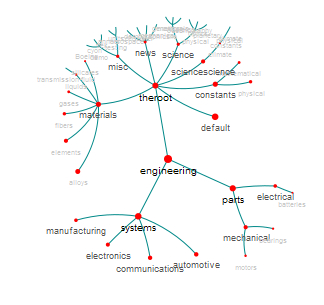Latest News
August 19, 2009

A few weeks ago, Allen Razdow, the inventor of Mathcad, invited me to take a tour of Numberspace, a fledging online portal he’s just created. He described it to me as “a kind of Wikipedia for numbers.”
Upon arrival, I discovered a Web-hosted repository of engineering numbers— thermal conductivity of air (0.025 W m-1 K-1), density of Kevlar 29 (1.44 g cm-3), and tensile strength of A36 carbon steel (475 MPa), to name but a few—housed in a searchable interface. You could just as easily locate many of these values in an online periodic table or an engineering reference manual, so what’s special about Razdow’s Numberspace?
The difference is, the numbers archived here are tagged with metadata (with citations of the source and the dates they’re created, for example) and assigned unique barcodes. They’re also HTML-coded, so if you can copy and paste the number into a HTML-compatible document, they’re automatically linked to the original entries in Numberspace. (In fact, if you click on any of the boldfaced numeric values in the preceding paragraph, the embedded hyperlinks will direct you to their source in Numberspace.)
Numberspace is the centerpiece of Razdow’s new company, True Engineering Technology (True#). Though Razdow and his staff are responsible for most, if not all, of the engineering numbers currently housed there, he realizes he’s not going to be able to hunt down and record all such values. The comprehensiveness of the number library, he hoped, will grow through user contribution.
But Numberspace, he revealed, is meant to illustrate what an enterprise-level number-management environment might look like. It’s a prototype of the kind of data warehouse you might build and maintain behind your firewall, perhaps to track and safeguard important engineering values relevant to your new product (for instance, the melting temperature, weight, and carbon footprint of a crucial part).

To add new numbers to the public database, you could just type up an assertion about, say, the atomic weight of gold or boiling point of copper, then let the site’s automatic language parser turn it into an equation. But first, you might need to learn the language of numbers.
Your assertion needs to be structured one of two ways:
- <property> of <subject> = <value>
- <subject> has <property> = <value>
- The boiling temperature of copper = 4643 Fahrenheit
- Copper has a boiling temperature = 4643 Fahrenheit
For more on Numberspace, watch the video below or visit the site at www.truenumbers.com.
Subscribe to our FREE magazine, FREE email newsletters or both!
Latest News
About the Author
Kenneth Wong is Digital Engineering’s resident blogger and senior editor. Email him at [email protected] or share your thoughts on this article at digitaleng.news/facebook.
Follow DERelated Topics






